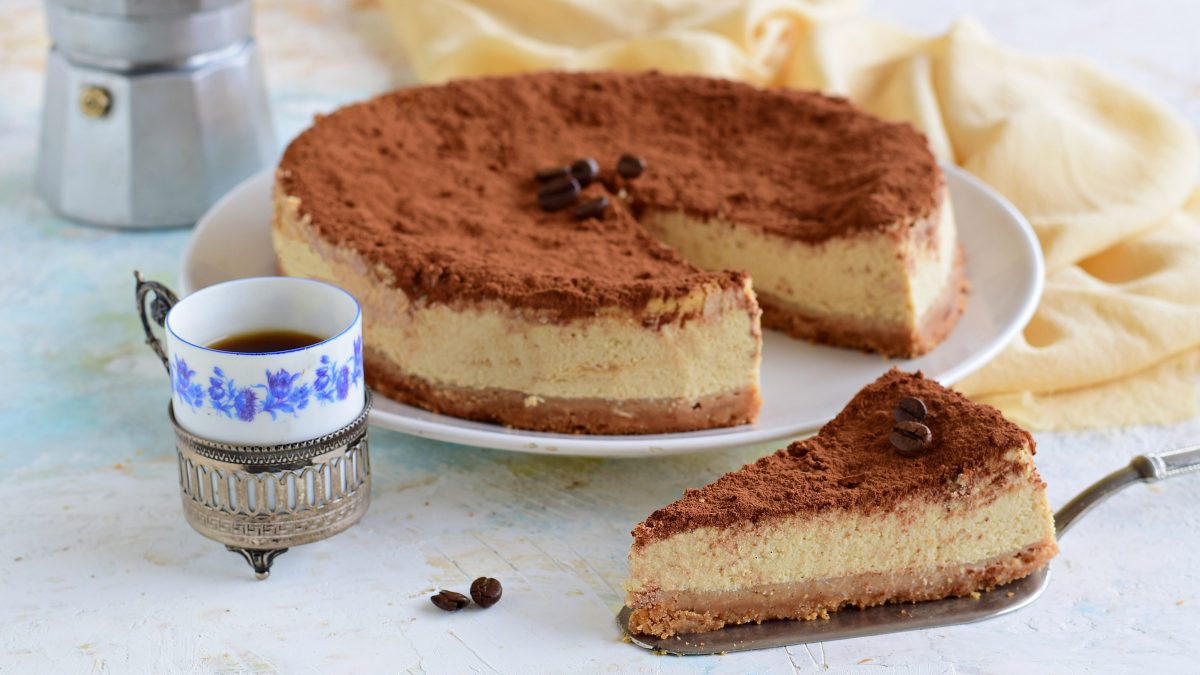
Baked Coffee Cheesecake is a quick and easy dessert to prepare, a delicious variation of the classic New York Cheesecake in which the intense aroma and strong taste of coffee prevail. The crust is made by mixing crushed dry biscuits with melted butter, while the cream is prepared by mixing cream cheese with eggs, sugar and coffee, which, depending on your tastes or needs, can be espresso or decaffeinated.
Unlike the more well-known versions of the famous American cold cake, this coffee cheesecake is baked in the oven: the result is a creamy and fragrant dessert, ideal for a snack or to serve as a dessert at the end of a meal. For the decoration we chose bitter cocoa and roasted coffee beans, but fresh cream whipped with powdered sugar is also perfect.
What is Baked Coffee Cheesecake?
Baked coffee cheesecake, a delightful fusion of rich, creamy cheesecake and the bold, aromatic flavors of coffee, has become a beloved dessert in the United States. Its origins can be traced back to the evolution of the classic cheesecake, which has roots in ancient Greece, but the American version—particularly the baked variety—gained popularity in the 20th century. As the United States embraced diverse cultural influences in the mid-1900s, coffee became a staple ingredient in many desserts, including cheesecake. The combination of coffee's deep, earthy flavor with the velvety smoothness of cheesecake resonated with American palates. By the 1980s and 1990s, coffee-flavored variations, including baked coffee cheesecake, appeared in upscale bakeries and restaurants, signaling its rise in popularity.
Pro Tips for The Best Baked Coffee Cheesecake
- For a smooth, lump-free batter, ensure that your cream cheese, and eggs are at room temperature. Cold ingredients can cause the mixture to become lumpy and uneven.
- For an added crunch and flavor, use a mixture of crushed biscuits or graham crackers with melted butter for the crust. Press it firmly into the base of your pan to avoid any gaps or air pockets, which can lead to an uneven crust.
- When combining the ingredients, mix just until smooth. Overmixing can introduce too much air into the batter, leading to cracks or a dense texture after baking.
- After baking, allow your cheesecake to cool slowly. First, leave it in the oven with the door slightly ajar for about an hour to prevent sudden temperature changes. Then, let it cool to room temperature before refrigerating.
- For the best flavor and texture, chill your cheesecake in the fridge for at least 4 hours, but ideally overnight. This gives the flavors time to meld and results in a firm, sliceable cheesecake.
What's The Best Cheese to Use for This Cheesecake?
The best cheese to use for a baked coffee cheesecake is cream cheese. Its smooth texture and mild, tangy flavor create the perfect base for a rich, creamy cheesecake. For the best results, opt for full-fat cream cheese to ensure a dense, luxurious texture. You can also mix in a bit of mascarpone for added richness or ricotta for a slightly firmer texture, depending on your preference.
What Type of Coffee Should I Use For The Cheesecake?
For a baked coffee cheesecake, it's best to use strong brewed coffee or espresso to ensure the coffee flavor stands out without being too overpowering. Opt for a medium to dark roast for a rich, bold flavor that complements the creamy cheesecake. If you prefer a smoother taste, you can also use instant espresso powder for a more concentrated coffee flavor.
How Do I Know When My Cheesecake is Baked Through?
To know when your cheesecake is baked through, look for a few key signs. The edges should be set and slightly puffed, while the center should still have a slight jiggle when gently shaken. You can also insert a toothpick or a knife into the center—if it comes out clean or with just a few moist crumbs, the cheesecake is done. Be careful not to overbake, as it can cause cracks or a dry texture.
Why Did My Cheesecake Crack? How Do I Prevent This?
Your cheesecake may have cracked due to rapid temperature changes, overbaking, or overmixing the batter. To prevent cracking, bake your cheesecake at a low temperature, use a water bath to maintain moisture, and avoid overmixing the batter. Allow it to cool gradually in the oven with the door slightly ajar before refrigerating to prevent sudden temperature shifts.
Should I Serve This Warm or Cold?
Baked coffee cheesecake should be served cold for the best flavor and texture. After baking, let it cool to room temperature, then refrigerate it for at least 4 hours or overnight. Chilling allows the flavors to meld and the cheesecake to firm up, making it easier to slice and enhancing its creamy texture.
Can I Make This Ahead of Time?
Yes, you can definitely make baked coffee cheesecake ahead of time! In fact, it often tastes better after sitting in the fridge for a few hours or overnight, as this allows the flavors to meld and the texture to set. Just make sure to cover it tightly with plastic wrap or foil to prevent it from absorbing any odors from the fridge.
Does It Freeze Well?
Yes, baked coffee cheesecake freezes well! To freeze, make sure it’s completely cooled, then wrap it tightly in plastic wrap and aluminum foil to prevent freezer burn. You can also place it in an airtight container. When ready to serve, thaw it in the refrigerator for several hours or overnight for the best texture.
How to Store Any Leftovers
To store leftover baked coffee cheesecake, cover it tightly with plastic wrap or place it in an airtight container to prevent it from drying out or absorbing odors. Keep it in the refrigerator for up to 5 days.
Ingredients
How to Make Baked Coffee Cheesecake
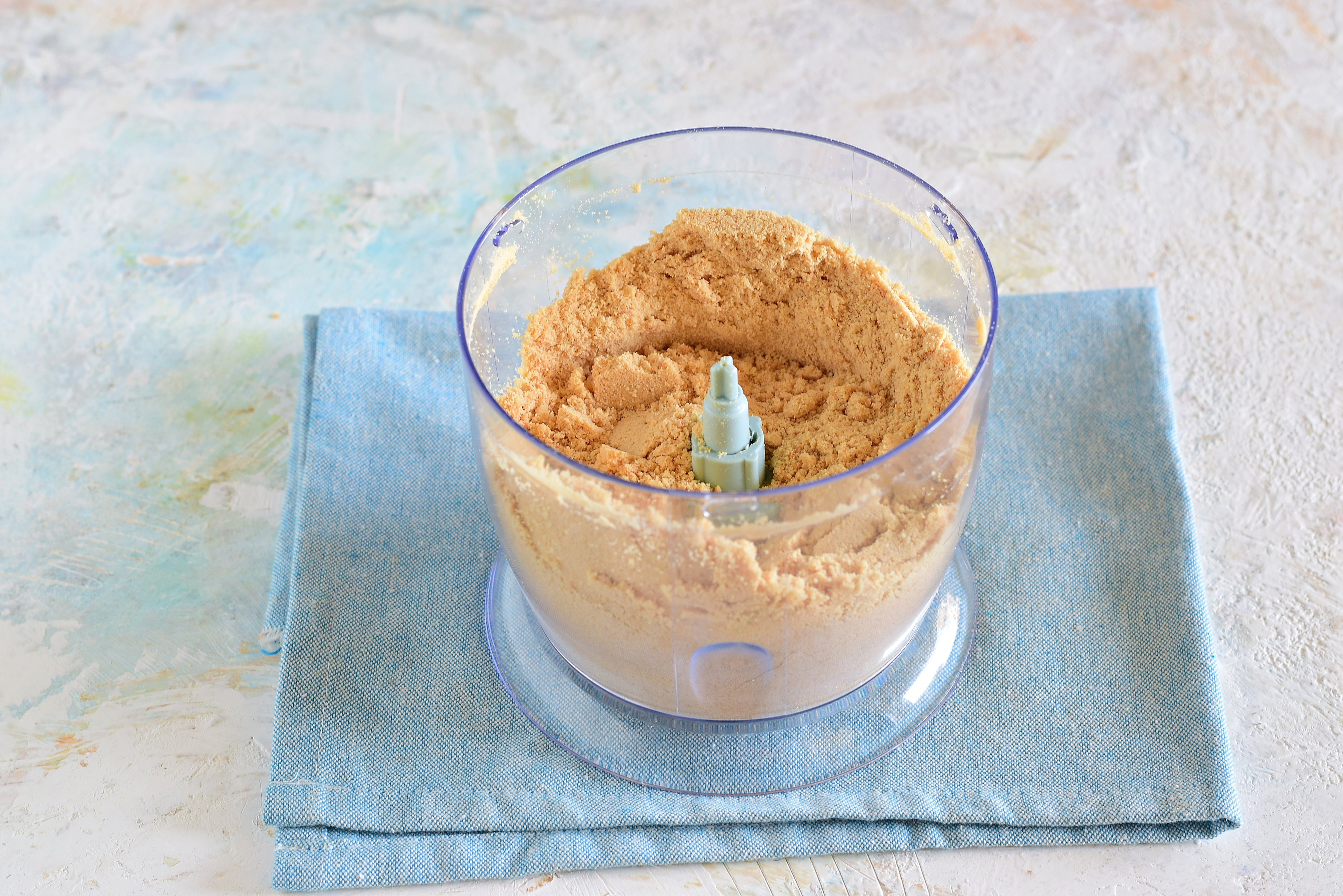;Resize,width=712;)
First, roughly break the biscuits and put them in a blender. Blend them until they become flour and then add a teaspoon of cinnamon powder.
First, roughly break the biscuits and put them in a blender. Blend them until they become flour and then add a teaspoon of cinnamon powder.
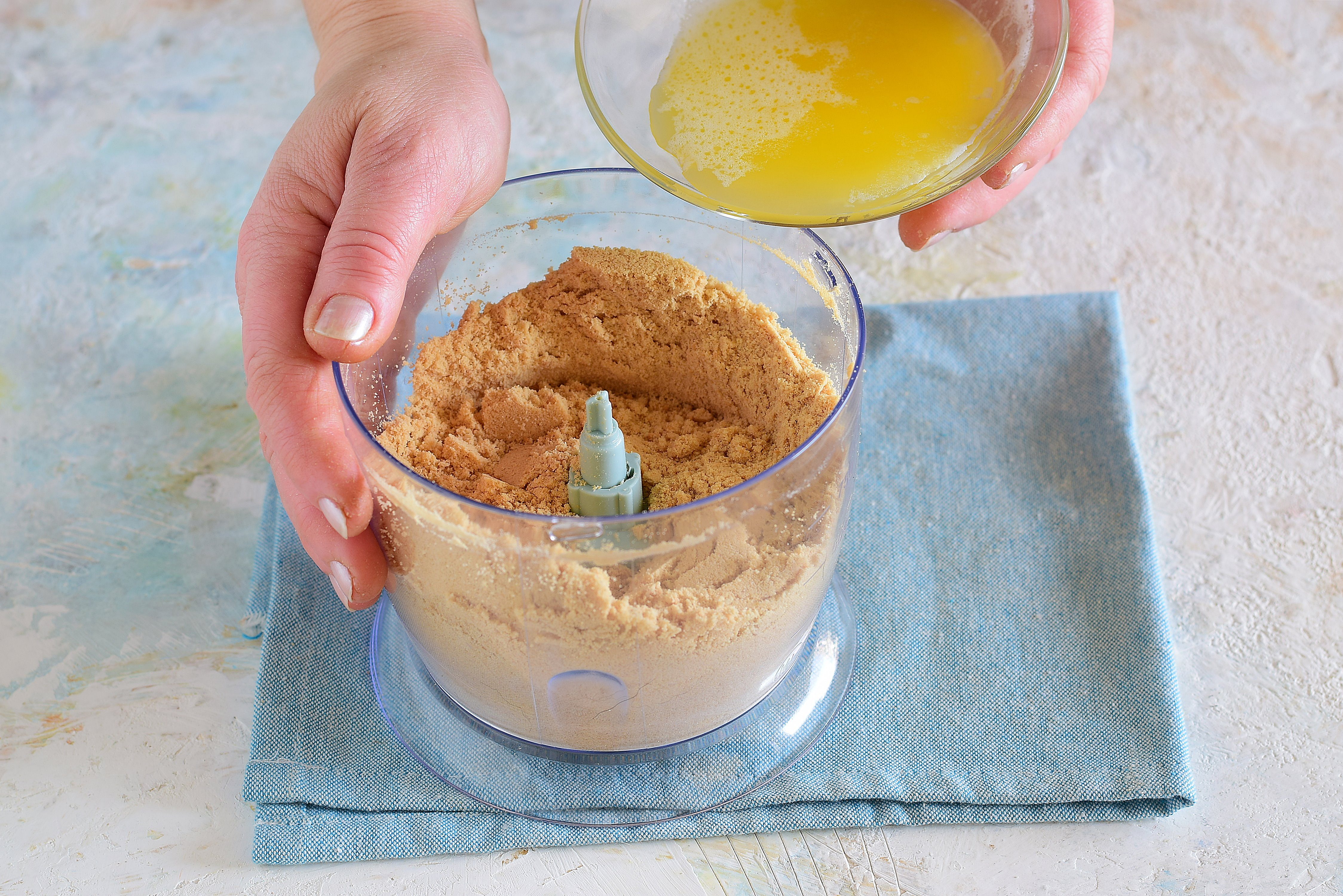;Resize,width=712;)
Then add the melted butter and blend again until you obtain a smooth mixture.
Then add the melted butter and blend again until you obtain a smooth mixture.
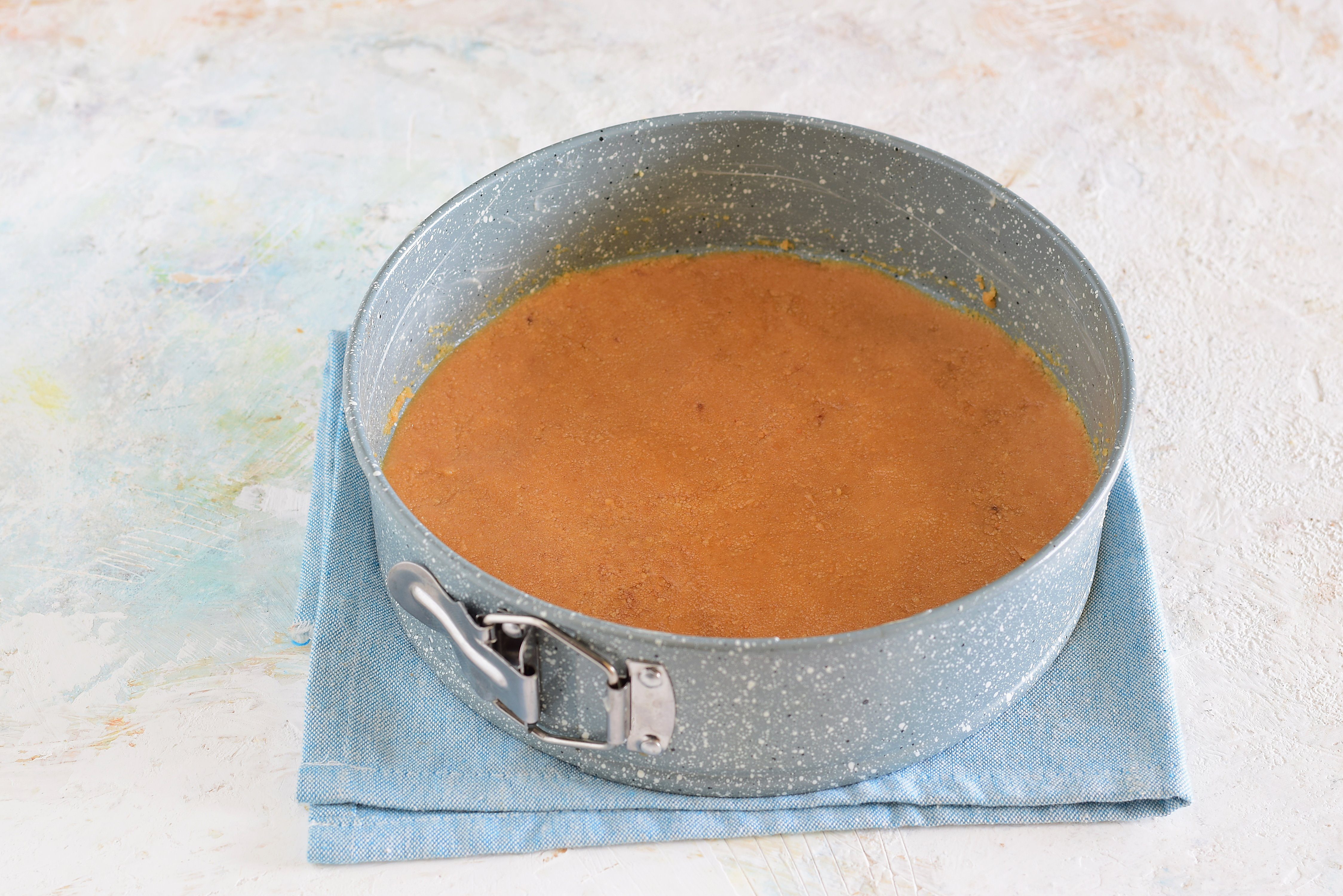;Resize,width=712;)
Transfer the resulting mixture into a previously buttered springform pan of about 24 cm in diameter. Level it with the help of a spoon to create a uniform layer, then place the mold in the refrigerator while you prepare the filling.
Transfer the resulting mixture into a previously buttered springform pan of about 24 cm in diameter. Level it with the help of a spoon to create a uniform layer, then place the mold in the refrigerator while you prepare the filling.
;Resize,width=712;)
Break the eggs into a bowl, add the vanilla extract and sugar, and beat with an electric mixer for 4-5 minutes or until frothy. Then add the cream cheese and cornstarch, and mix with an electric whisk to combine.
Break the eggs into a bowl, add the vanilla extract and sugar, and beat with an electric mixer for 4-5 minutes or until frothy. Then add the cream cheese and cornstarch, and mix with an electric whisk to combine.
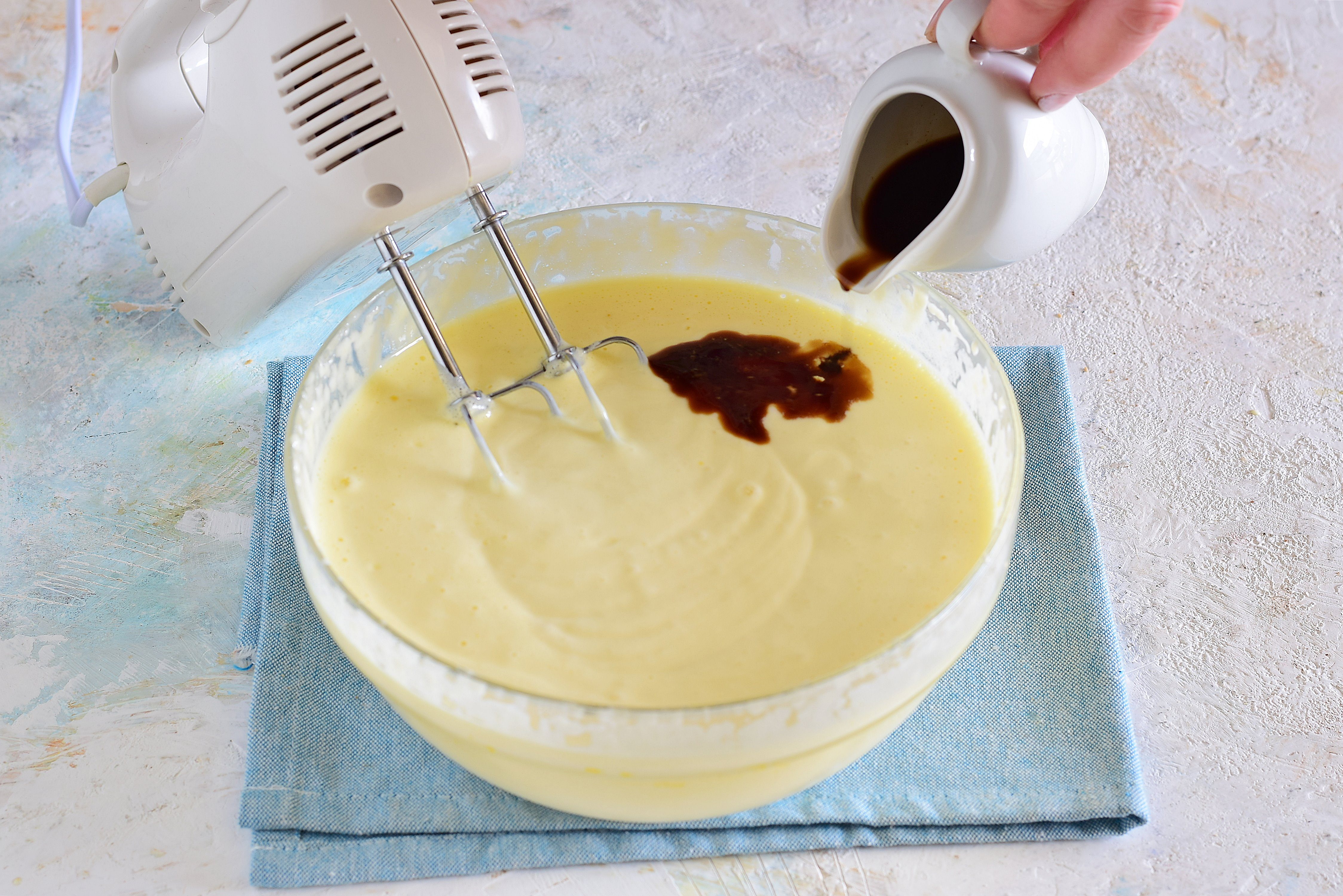;Resize,width=712;)
Finally add the very cold moka coffee and mix gently one last time.
Finally add the very cold moka coffee and mix gently one last time.
;Resize,width=712;)
At this point pour the cream onto the biscuit base and cook in a static oven at 350°F/175°C for 55-60 minutes. During the last 10 minutes, place a pot holder or a wooden spoon between the oven and the door, so that the latter remains slightly open and the cheesecake dries well.
At this point pour the cream onto the biscuit base and cook in a static oven at 350°F/175°C for 55-60 minutes. During the last 10 minutes, place a pot holder or a wooden spoon between the oven and the door, so that the latter remains slightly open and the cheesecake dries well.
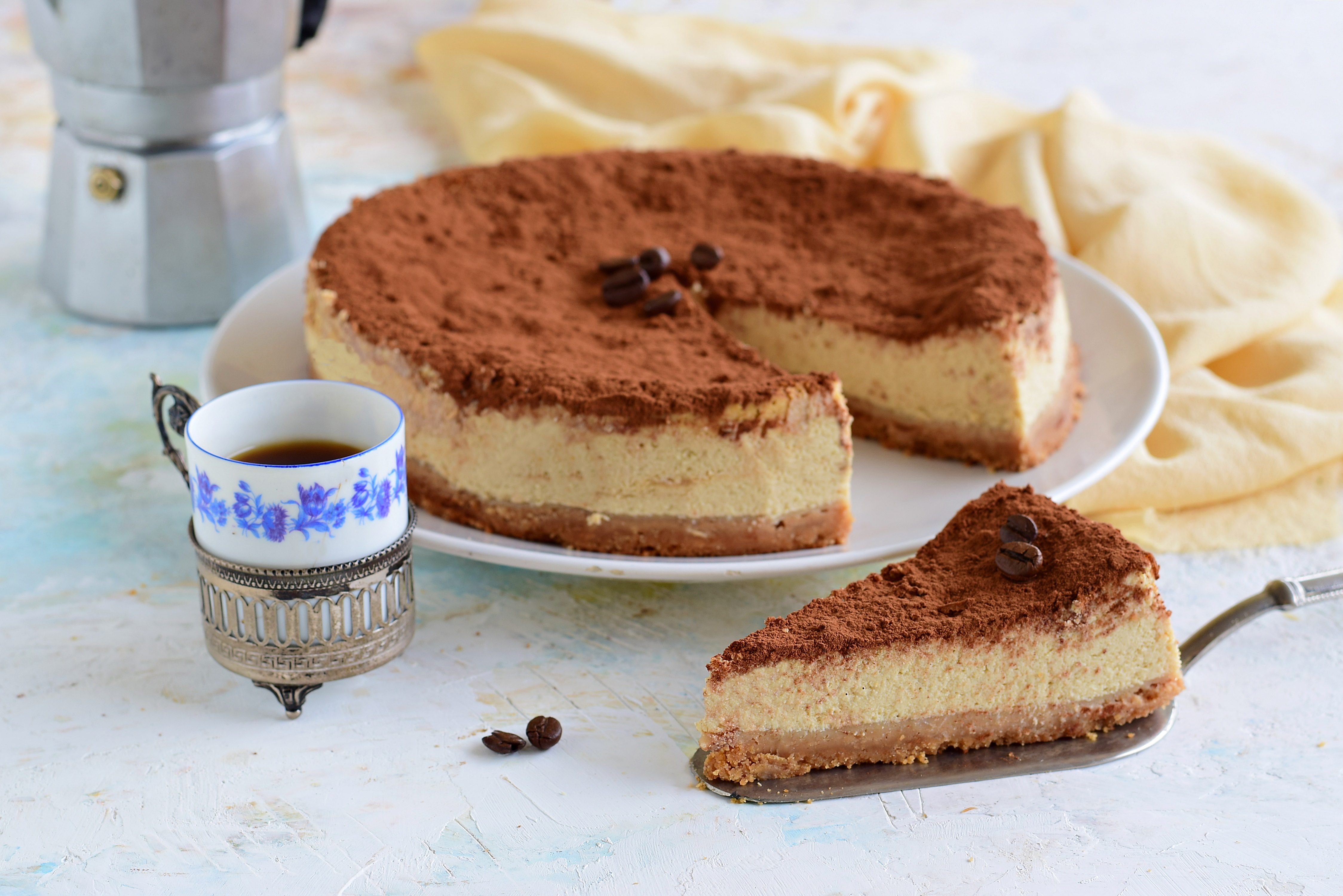;Resize,width=712;)
Once cooked, let your coffee cheesecake cool well and then remove it from the mold; sprinkle with plenty of cocoa, garnish with coffee beans and enjoy!
Once cooked, let your coffee cheesecake cool well and then remove it from the mold; sprinkle with plenty of cocoa, garnish with coffee beans and enjoy!
;Resize,width=767;)
